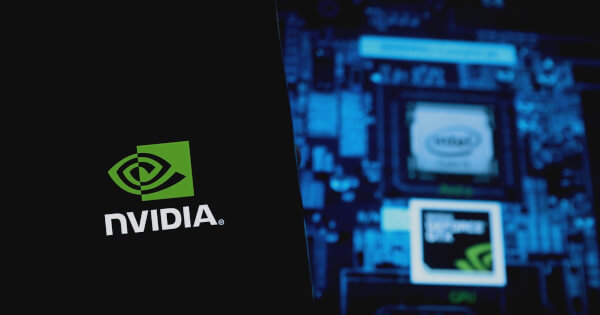Tony Kim
Oct 15, 2024 03:59
NVIDIA enhances surgical robotics through AI-driven simulation and digital twin technology, aiming to improve surgical outcomes and democratize healthcare access.
The integration of robotic surgical assistants (RSAs) in operating rooms is poised to revolutionize medical procedures, offering significant benefits for both surgeons and patients. According to the NVIDIA Technical Blog, these robotic platforms, operated via teleoperation by trained surgeons, provide enhanced dexterity, potentially streamlining workflows and reducing surgeon workload. NVIDIA’s latest research delves into visual behavior cloning to further elevate the capabilities of robotic-assisted surgeries.
Innovative Frameworks for Surgical Assistance
NVIDIA introduces two novel frameworks: the Surgical First Interactive Autonomy Assistant (SuFIA) and its variant, SuFIA-BC, which incorporates behavior cloning techniques. SuFIA leverages natural language guidance and large language models (LLMs) for high-level planning, while SuFIA-BC enhances precision and dexterity through behavior cloning. These frameworks capitalize on recent advancements in LLMs and behavior cloning, tailoring them to meet the unique challenges of surgical environments.
The overarching aim of this research is to accelerate the development of surgical robotic assistants, thereby reducing surgeon fatigue, improving patient safety, and democratizing access to high-quality healthcare. SuFIA and SuFIA-BC have been demonstrated across various surgical subtasks in both simulated and physical settings, showcasing their potential to transform surgical practices.
Photorealistic Training Environments
The research enhances the ORBIT-Surgical framework to create a realistic training environment featuring anatomically accurate models and high-fidelity rendering using NVIDIA Omniverse. ORBIT-Surgical is an open-simulation framework that supports learning in surgical augmented dexterity. It utilizes Isaac Lab, a modular framework for robot learning, built on Isaac Sim, which provides reinforcement and imitation learning libraries.
Digital Twin Technology in Surgery
NVIDIA’s digital twin workflow generates high-quality synthetic data crucial for training and evaluating models in complex surgical tasks. This involves creating photorealistic anatomical models from CT data, which are then used to develop behavior cloning models. The study explores various visual observation modalities, including RGB images and point cloud data.
Policy Learning and Expert Demonstrations
Five fundamental surgical subtasks were evaluated: tissue retraction, needle lift, needle handover, suture pad threading, and block transfer. The results indicate that point cloud models excel in spatial tasks, while RGB-based models perform better where color cues are essential. The study also highlights the importance of sample efficiency and the role of architecture in training models with fewer demonstrations.
Additionally, the robustness of models to changes in camera perspectives was assessed, with point cloud models showing superior resilience, indicating their potential for practical deployment in surgical settings.
Conclusion
This research opens new avenues in surgical robotics, offering open-source resources for further exploration. By leveraging these assets, researchers can advance surgical robotics, experiment with learning approaches, and develop solutions for complex procedures. The community is encouraged to build on this foundation to enhance robotic-assisted surgery.
Image source: Shutterstock
Credit: Source link






















 Bitcoin
Bitcoin  Ethereum
Ethereum  XRP
XRP  Tether
Tether  Solana
Solana  USDC
USDC  Dogecoin
Dogecoin  Cardano
Cardano  Lido Staked Ether
Lido Staked Ether  TRON
TRON  Wrapped Bitcoin
Wrapped Bitcoin  Wrapped stETH
Wrapped stETH  Chainlink
Chainlink  Avalanche
Avalanche  Sui
Sui  Stellar
Stellar  Litecoin
Litecoin  Toncoin
Toncoin  Shiba Inu
Shiba Inu  Hedera
Hedera  LEO Token
LEO Token  USDS
USDS  Hyperliquid
Hyperliquid  Polkadot
Polkadot  WETH
WETH  MANTRA
MANTRA  Bitcoin Cash
Bitcoin Cash  Bitget Token
Bitget Token  Ethena USDe
Ethena USDe  Wrapped eETH
Wrapped eETH  Uniswap
Uniswap  Monero
Monero  NEAR Protocol
NEAR Protocol  Pepe
Pepe  WhiteBIT Coin
WhiteBIT Coin  Aave
Aave  Ondo
Ondo  Bittensor
Bittensor  Aptos
Aptos  Internet Computer
Internet Computer  Dai
Dai  Official Trump
Official Trump  Mantle
Mantle  Ethereum Classic
Ethereum Classic  Tokenize Xchange
Tokenize Xchange  OKB
OKB  Gate
Gate  sUSDS
sUSDS  Coinbase Wrapped BTC
Coinbase Wrapped BTC 